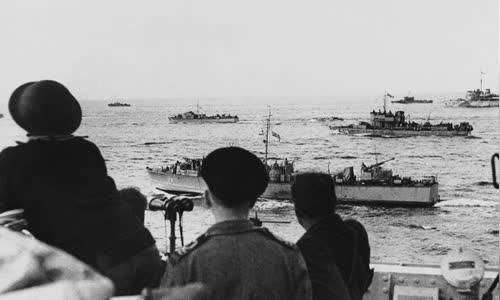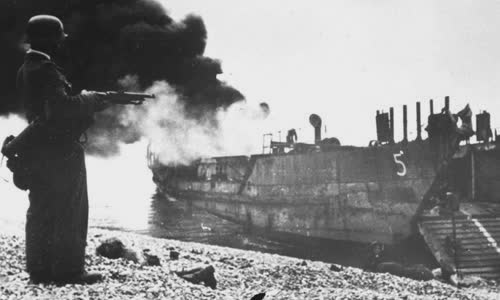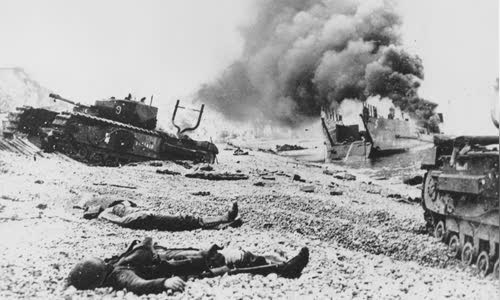Serious mistakes caused the Allies to pay a heavy price for people and equipment during the Jubilee campaign to land on the French coast in 1942.
In the early morning of August 19, 1942, more than 6,000 British, Canadian and American soldiers moved on 230 ships and landing boats to carry out Operation Jubilee.

The British battleship supported the landing force at Dieppe on the morning of August 19, 1942 Photo: AP
The landing force was supported by 58 tanks, 8 destroyers and hundreds of British and Canadian aircraft.
Operation Jubilee takes place at a critical moment in World War II.
Germany was intercepted by the Soviet Red Army in Moscow, but Leningrad was still surrounded and Sevastopol fell.
Against this background, the Allies decided to launch Operation Jubilee to test the viability of a large-scale amphibious operation.
Under the plan, 5,000 Canadian soldiers, 1,000 British commandos and 50 US Army commandos would land on Dieppe and control the town for one day, destroying radar stations and shore defenses, and capture German prisoners.
The Allies landed at 6 locations, codenamed Yellow, Blue, Red, White, Green, and Orange.

German soldiers on the corpse of an Allied landing craft after the battle Photo: AP
The main landing point is in the Red and White area, right in front of this city.
However, the raid encountered difficulty from the outset.
The landing at Cam beach took place smoothly.
On the Blue coast, Canadian soldiers were completely exposed to the enemy's guns, as the smoke of camouflage faded.
The soldiers in the Green zone landed in the wrong position.
The main landing in the Red and White zones became catastrophic.

Canadian soldiers were killed and many weapons damaged on the coast of Dieppe Photo: AP
"The firepower was very intense. We became living steles for the enemy to sweep," recalls communications officer Daivid Hart.
29 tanks were deployed but only 27 were ashore.
"When we got to the shore, everything was really chaotic, like hell. It was really shocking," recalls Raymond Gilbert, a tank soldier.
The order to withdraw was given and the British ships returned to port at 14:00 that same day.
The catastrophic campaign cost the Allies dearly with more than 3,600 British and Canadian soldiers killed, wounded or taken prisoner.
Six American special forces were killed, 7 were wounded and 4 were captured.
The Allied failure stems from many reasons such as poor scouting, inexperienced and inexperienced soldiers, a lack of fire support, a mistake in direction and too optimistic in the planning process.



 Aroha Samuels
Aroha Samuels







